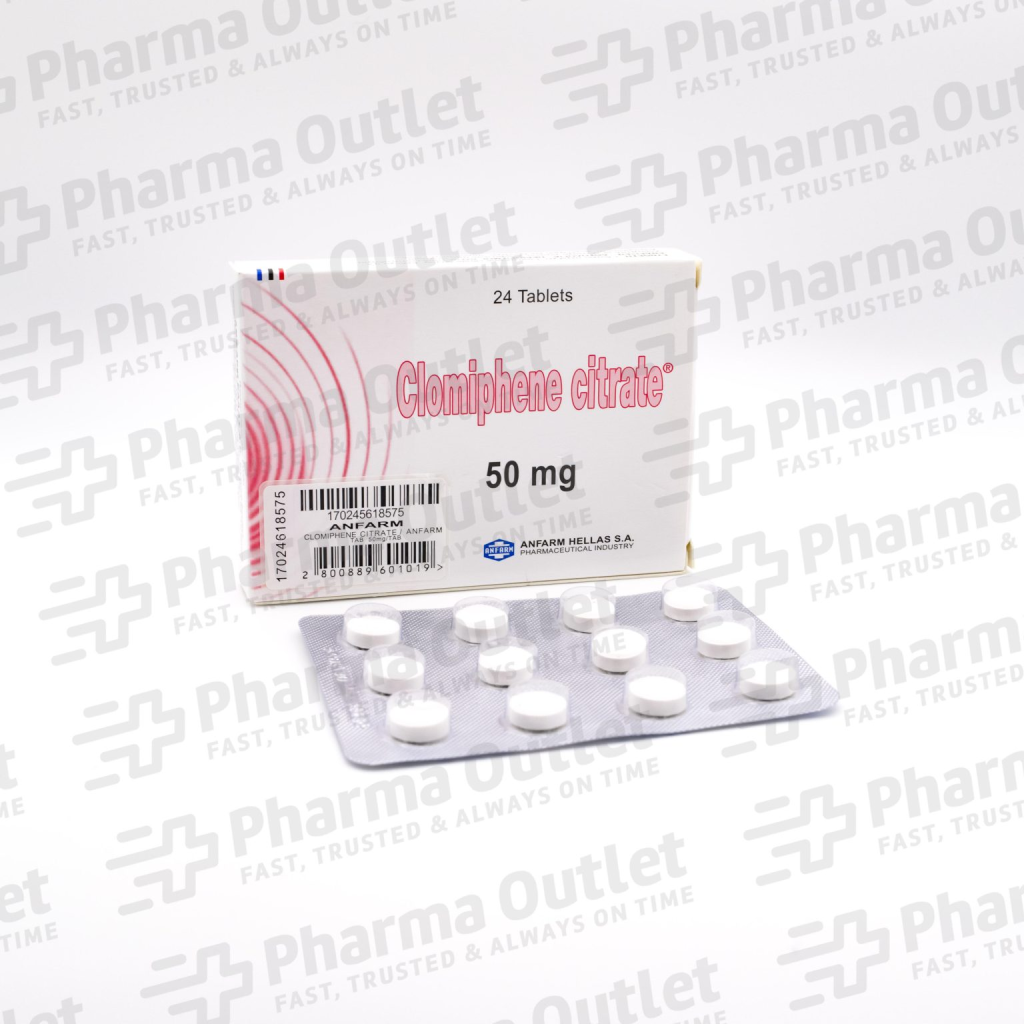What Is Clomiphene Citrate?
Clomiphene Citrate—commonly known as Clomid—is a selective estrogen receptor modulator (SERM). Originally developed as a fertility drug for women, it has carved out a strong following in the world of post-cycle therapy (PCT) among male athletes and bodybuilders.
In simple terms, it helps bring natural testosterone levels back to life after a steroid cycle. When your body’s own production gets shut down, Clomid steps in to restart the engine.

How Clomid Works in the Male Body
After using anabolic steroids, your body often stops producing testosterone naturally. Clomid tricks your brain into thinking estrogen levels are low, which causes a signal to be sent to your testes to start producing more testosterone.
It acts at the level of the hypothalamus and pituitary gland, increasing luteinizing hormone (LH) and follicle-stimulating hormone (FSH)—both of which are crucial for testosterone production and sperm health.
Why Bodybuilders Use Clomiphene Citrate
- Kickstarts natural testosterone after a cycle
- Prevents testosterone crash and associated side effects
- Preserves muscle mass during post-cycle recovery
- Reduces estrogenic side effects like gynecomastia
- Restores libido, energy, and mood
It’s especially popular in PCT protocols following harsh cycles involving suppressive compounds like Tren, Deca, or high-dose testosterone.
Typical Clomid Dosage After a Cycle
The common dosing for men using Clomiphene Citrate 50MG looks like this:
- Day 1–7: 100mg per day (split into two 50mg doses)
- Week 2–4: 50mg per day
- Optional Week 5: 25mg per day (if tapering gradually)
Most cycles last 4–6 weeks, depending on how suppressed your testosterone levels are.
Can You Use Clomid as a Natural Testosterone Booster?
Yes, and many natural lifters or older men use low-dose Clomid to improve testosterone without resorting to TRT. Even 12.5–25mg every other day has been shown to improve hormone profiles in clinical settings. It’s especially useful for men trying to maintain fertility while optimizing testosterone.
Signs You Might Need Clomid Post-Cycle
- No libido
- Chronic fatigue
- Testicular shrinkage
- Depression or irritability
- Poor workout performance or muscle loss
- Low testosterone levels on bloodwork
If you’re experiencing any of these post-cycle, Clomid might be exactly what your body needs to bounce back.
Is Clomid Better Than Nolvadex?
Both Clomid and Nolvadex (Tamoxifen) are SERMs, but they work slightly differently. Clomid is stronger at stimulating testosterone, while Nolvadex is often better at blocking estrogenic side effects, especially around the chest.
Many advanced users run both together during PCT:
Clomid + Nolvadex = Full testosterone restart + anti-gyno protection.
Side Effects of Clomiphene Citrate
Although Clomid is generally safe, it’s not completely side-effect free. At higher doses or longer cycles, you might experience:
- Mood swings or emotional sensitivity
- Visual disturbances (blurry vision or light flashes)
- Nausea or headaches
- Acne or oily skin
- Temporary suppression of libido (in some cases)
These typically go away once dosing is reduced or stopped. Starting with moderate doses and adjusting based on response helps minimize these issues.
Is It Legal in the UK?
Clomiphene Citrate is prescription-only in the UK, primarily used for treating female infertility. However, it’s not a controlled substance, so personal possession for self-use isn’t criminalized. It’s often sold online as a “research chemical”—but users should be cautious about the source and quality.
How Long Before You Feel It Working?
Most users start noticing a boost in mood, libido, and energy within 1–2 weeks. Full hormonal recovery may take 4–6 weeks, and bloodwork is the best way to track progress.
Should You Run Bloodwork Before and After?
Absolutely. Running blood tests before starting Clomid, and again at the end of PCT, gives you hard proof of how well it worked. Key markers to check:
- Total testosterone
- Free testosterone
- LH and FSH
- Estradiol
- SHBG (Sex Hormone Binding Globulin)
Who Shouldn’t Use Clomid?
- Men with underlying prostate cancer or hormone-sensitive cancers
- Those prone to mood instability or anxiety
- Anyone already on testosterone replacement therapy (TRT)
- Users with serious vision disorders
Always consult a healthcare professional before starting a Clomid protocol—especially if you’re using it outside of traditional fertility settings.
What’s better for PCT—Clomid or Nolvadex?
Clomid is stronger for stimulating testosterone, while Nolvadex is better for blocking estrogen. Many users combine both for full recovery support.
Can I use Clomid without doing a steroid cycle?
Yes, Clomid is sometimes used off-cycle or by natural lifters to boost testosterone naturally. Low doses like 25mg every other day can be effective.
How fast does Clomid work for testosterone?
You may feel improvements in 7–10 days, but full recovery typically takes 4–6 weeks. Bloodwork helps you measure the real impact.
Can Clomid boost fertility in men?
Yes. It increases LH and FSH, which help stimulate natural testosterone and sperm production. It’s often prescribed to men with low fertility or low T.
What are the side effects of Clomiphene Citrate 50MG?
Common side effects include mood swings, headaches, blurry vision, and occasional nausea. These usually subside once the dosage is lowered or stopped.